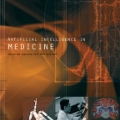Water distribution systems (WDS) carry potable water with millions of miles of pipelines and deliver purified water to residential areas. The incidents in the WDS cause leak and water loss, which imposes pressure gradient and public health crisis. Hence, utility managers need to assess the condition of pipelines periodically and localize the leak location (in case it is reported). In our previous works, we designed and developed a size-adaptable modular in-pipe robot [1] and controlled its motion in in-service WDS. However, due to the linearization of the dynamical equations of the robot, the stabilizer controller which is a linear quadratic regulator (LQR) cannot stabilize the large deviations of the stabilizing states due to the presence of obstacles that fails the robot during operation. To this aim, we design a self-rescue mechanism for the robot in which three auxiliary gear-motors retract and extend the arm modules with the designed controller towards a reliable motion in the negotiation of large obstacles and non-straight configurations. Simulation results show that the proposed mechanism along with the motion controller enables the robot to have an improved motion in pipelines.
翻译:在以往的工程中,我们设计并开发了一个大小可适应的管状模块,装有几百万英里的管道,并将净化的水输送到住宅区。在WDS中发生的事件造成漏水和缺水,造成压力梯度和公共卫生危机。因此,公用事业管理人员需要定期评估管道状况,确定漏水地点(如果有报告的话)。在我们以前的工程中,我们设计并开发了一个大小可适应的管状机器人模块[1],并控制其使用中WDS的移动。然而,由于机器人动态方程式的线性化,稳定器是一个线形二次调节器(LQR),由于机器人在操作过程中遇到障碍,无法稳定稳定稳定稳定状态的巨大偏差。为此,我们为机器人设计了一个自我扫描机制,其中3个辅助齿轮机发动机收回并扩展了手臂模块,与设计控制器一起在大型障碍和非压力配置的谈判中进行可靠的动作。模拟结果表明,拟议的机制与运动控制器一起使机器人能够在管道中进行改良动作。




